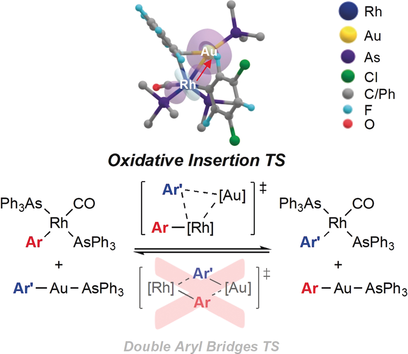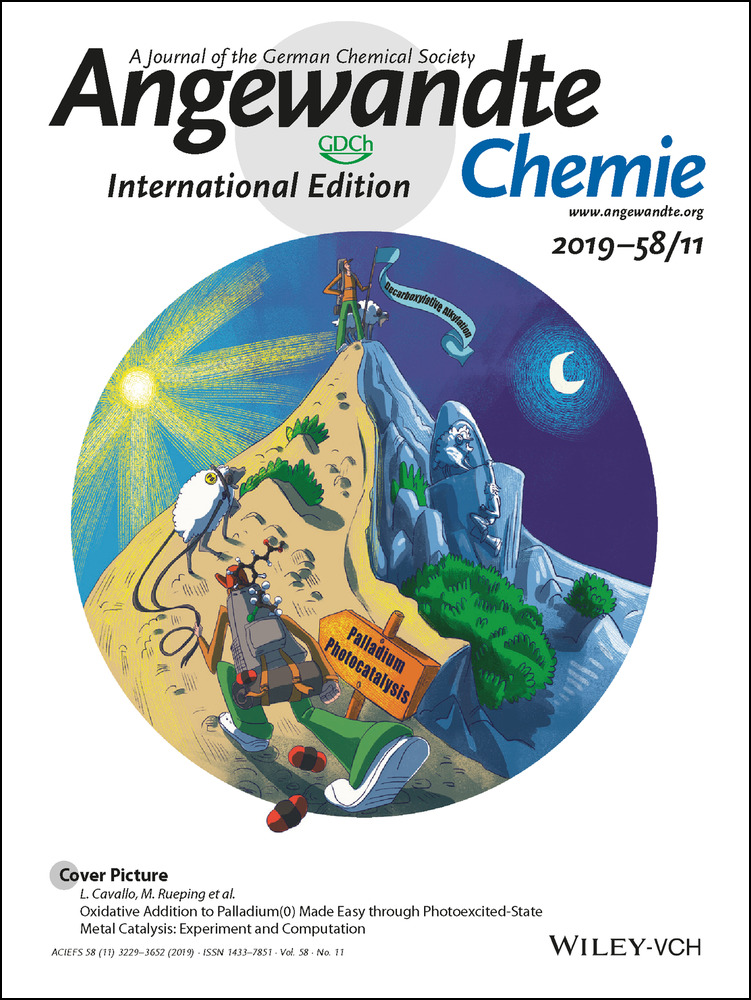RhIAr/AuIAr′ Transmetalation: A Case of Group Exchange Pivoting on the Formation of M−M′ Bonds through Oxidative Insertion
Graphical Abstract
Transmetalation, but not as you know it: A combination of kinetic studies, theoretical calculations, and microkinetic modeling showed that C6F5 (Pf)/C6Cl2F3 (Rf) exchange between [AuPf(AsPh3)] and trans-[RhRf(CO)(AsPh3)2] does not occur by typical concerted Pf/Rf transmetalation via electron-deficient double bridges. Instead, nucleophilic attack of RhI at the gold center triggers asymmetric oxidative insertion of Rh into the Au−aryl bond (see scheme).
Abstract
By combining kinetic experiments, theoretical calculations, and microkinetic modeling, we show that Pf/Rf (C6F5/C6Cl2F3) exchange between [AuPf(AsPh3)] and trans-[RhRf(CO)(AsPh3)2] does not occur by typical concerted Pf/Rf transmetalation via electron-deficient double bridges. Instead, it involves asymmetric oxidative insertion of the RhI complex into the (Ph3As)Au−Pf bond to produce a [(Ph3As)Au−RhPfRf(CO)(AsPh3)2] intermediate, followed by isomerization and reductive elimination of [AuRf(AsPh3)]. Interesting differences were found between the LAu−Ar asymmetric oxidative insertion and the classical oxidative addition process of H2 to Vaska complexes.





